David Easton Input and Output Analysis:
David Easton’s systems approach is known as input-output analysis. It is also called the conversation process. It laid emphasis on the conversation of inputs into outputs. In this model, an analogy is drawn to the “Black Box” notion, taken from the field of electrical engineering. To quote Ross Ashbey, “We imagine the investigator has before him a black box that, for any expression cannot be opened. It has various inputs-switches that he may move up or down, terminals to which he may apply potential, photoelectric cell on to which he may shine lights and so on. Also available are outputs-terminals on which potential may be measured, light that may flash, pointers may move over a graduated scale and so on”. The investigator is supposed to estimate, what the outputs of the black box will be i.e. how to manipulate the switches and levers controlling the inputs or the manner in which the black box will respond on the feedback information it receives. The process is illustrated in the diagram-
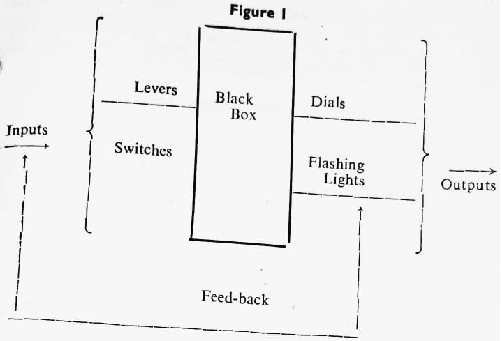
David Easton has based his system analysis on this model. A political system is represented somewhat according to this diagram-
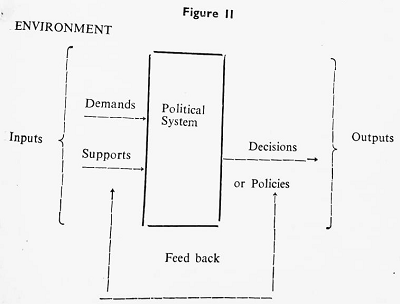
Easton illustrated his concept of the political system with the help of figure II. He was of the opinion that the political system, functioning with the general social environment largely consists of the input and output structures and conversion process. One must study all these aspects analytically to understand a political system.
Before we discuss the detailed analysis of the system, let us know Easton’s definition of the important terms he used in his model-
(1) Political System- “Those institutions, processes and interactions through which values are authoritatively allocated in a society”.
(2) Environment- “Those social, biological, sociological, political, economic and personality forces both inside and outside a particular society that effect and are effected by the political system but are analytically distinct from it.”
(3) Inputs- “Those events in the environment that act upon the political system and evoke some kind of response from it. According to Easton, there are two kinds of inputs: demands which are expressions of desire that values be allocated in particular ways and supports which are expressions of willingness to accept particular value allocations or the processes by which the allocations are made”.
(4) Conversion Process- “Those institutions, processes and interactions by which the political system converts demands and supports into outputs”.
(5) Outputs- “Those actions by the political system that affect the system’s environment in some manner, consisting mainly of authoritative decisions and acts- that is laws, executive orders, judicial decisions and the like promulgated by the authorities (people generally recognized as having the legitimate power and duty to allocate values).
(6) Outcomes- “Those changes in the environment brought about by the political system’s outputs”.
(7) Feedback- “Those changes in that nature, intensity and volume of demands and supports brought about by the outcomes”.
(8) Demands- “A demand is an expression of opinion that an authoritative allocation with regard to a particular subject matter should or should not be made by those responsible for doing so”.
(9) Supports- Supports are pressures brought on the political system to continue what it is doing. These come in the form of obedience to laws, payment of taxes etc.
Easton was mainly concerned with the relationship between a system and the environment in which it was located. He postulated the existence of a close relationship between the system and the environment. He divided the basic components of his model into inputs, consisting of demands and supports, and outputs connected by feedback. As regards demands, he distinguished between external demands coming from the environment and internal ones from within the system. Easton has also explained three objects of supports-
(a) “The political community” is defined as a group that seeks to settle differences or promote decisions through a peaceful action in common”.
(b) The “regime”, equivalent to the constitutional order, including arrangements for the processing demands and implementation of decisions.
(c) The “government” which undertakes concrete tasks.
The relationship between these three is portrayed in figure III.
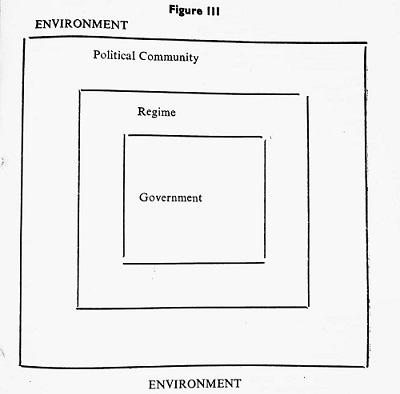
Easton has also discussed the flow model of the political system. According to him, every political process involves a continuous and interlinked flow of behaviour. For Easton, outputs are not the terminal points. They are the feedback for the authorities for subsequent actions. Thus, input-output is a continuous process.
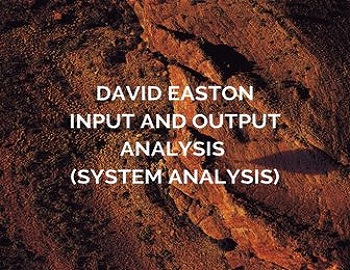
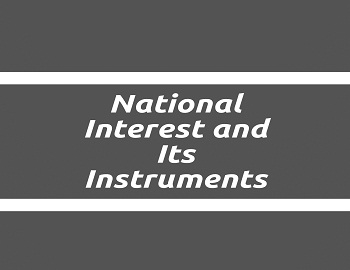
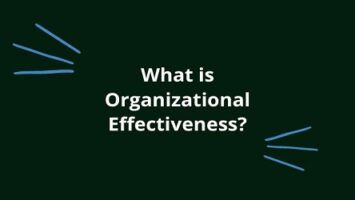
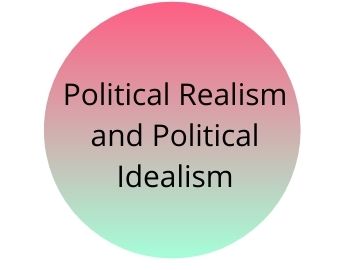


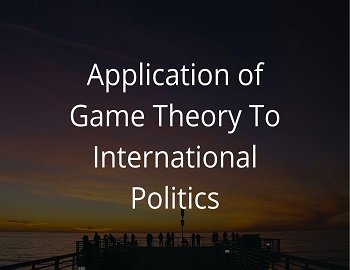
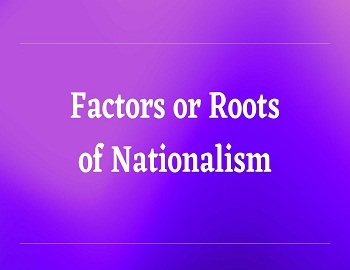
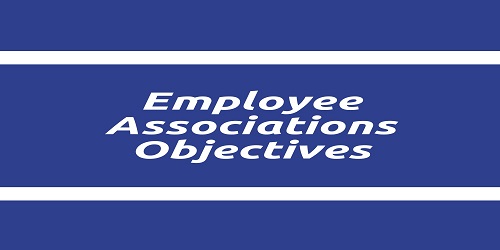
Comments (No)